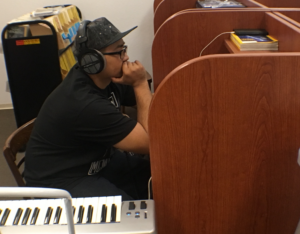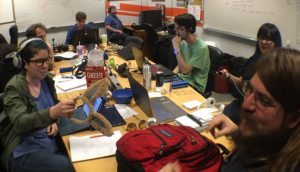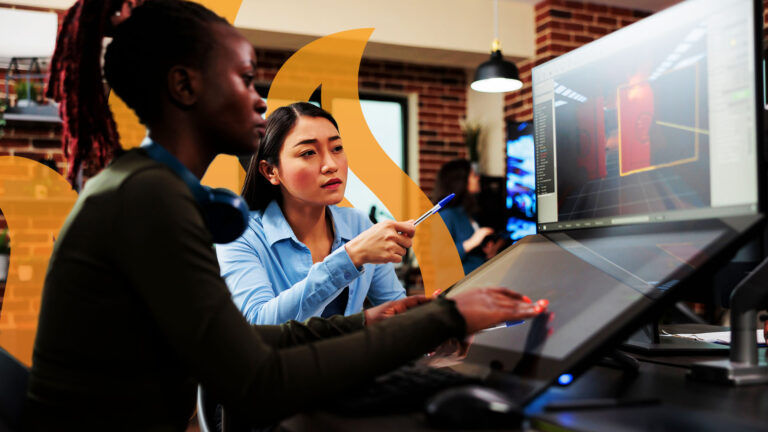A college campus is not necessary for learning, but it is helpful. The variety of environments that make up a campus setting are becoming more accepted and sought after in workplaces. Breather, an innovative company out of Montreal, says its mission is to “make the world’s spaces connected, accessible and productive”. They have identified 7 environments that promote specific working and learning behaviors and outcomes. Each of these will be familiar to USV students.
 The Nook
The Nook
Private small spaces enable students and workers to get away from distractions. A Nook is designed for working alone and provides the space to really focus on a particular project.
A quick walk around campus reveals nooks in a variety of settings: students often take advantage of nooks along the corridor to the Dragon’s Den, in the Library, or near the piano.
 The Study
The Study
The study is designed with two people in mind. It’s the right space for one-on-one meetings and collaborations. At USV, these often happen in an office with an advisor or instructor. Just as often, they happen between students on a couch or at a table.
Anyone familiar with the USV environment knows how often students pair up. Finding and developing study buddies often leads to successful projects.
 The Hub
The Hub
The ultimate space for group or team collaboration encourages free-form discussion and sharing with a small group. While many conference rooms serve the purpose, at USV, club rooms and open tables often become hubs as students gather and develop ideas. Designed to enable round-table discussion, these spaces often have large tables with lots of seating.
 The Suite
The Suite
Sometimes, one space is not enough. In areas like the Dragon’s Den, the Library, the Piano area or even in student housing and at local coffee shops, students form clusters to work on different projects sharing the same space. They benefit from the proximity of others even as they work on separate problems.
 The Workshop
The Workshop
Breather’s Workshop is probably the most versatile of all the spaces. It’s very much like the USV Game Studio classroom or the eSport team room. It’s designed to support fundamental team tasks like brainstorming, design, and sustained practice sessions among colleagues.
 The Agora
The Agora
When presenting or teaching to a group of students, faculty appreciate a different type of space: the Agora. Breather says these spaces are big, open, and most importantly, they allow for everyone to see the presenter or speaker.
At USV, not only do classrooms meet the description, but also presentations that take place in the Dragon’s Den or other large rooms take on the feeling of an Agora, where information is transmitted to and received by everyone in the room, whether they be students or community members attending on-campus workshops.
 The Retreat
The Retreat
For team building and fostering deeper connections between members, the retreat is a special kind of place. It can be outside or indoors and welcomes a fluid movement between people. At USV, the seating areas around the college, both in front of the building and near the food truck area, qualify as retreats. Of course, the Dragon’s Den has always served this purpose.
At the root of the research that underpins Breather’s venture is the notion that the age of the “knowledge worker” has evolved. It is inspired by the work of Daniel Pink, who wrote his book A Whole New Mind and introduced the term “The Conceptual Age” to readers. The Conceptual Age is described as the new era of work where increasingly workers must become skilled in areas guided by Design, Story, Symphony, Empathy, Play, and Meaning.
Breather notes that professional success is no longer measured by individual worker performance, but rather by how teams perform together. For those preparing to enter such dynamic work environments, the “old school” layout of cubicles and conference rooms just doesn’t make the grade. USV students have discovered how to use the variety of spaces on campus to become more inspired, creative and professional all at the same time.
See their video:
How to work better, by design. from Breather on Vimeo.


